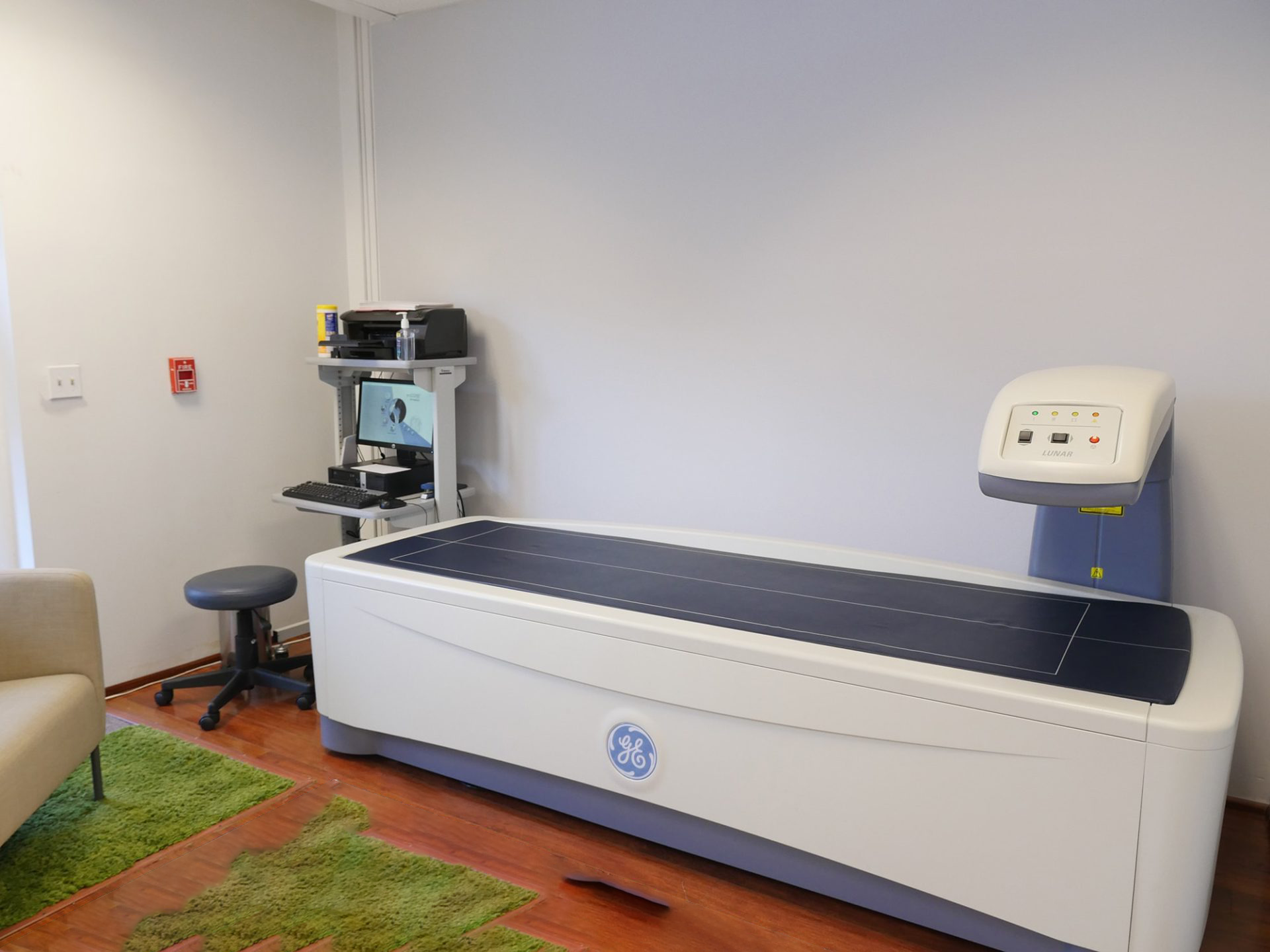It’s been far established that weight is not a true indicator of overall health. One single number on a conventional scale does not tell a larger story of what’s going on inside the body. However, it is very important to know what your body is “made of” in terms of fat mass, lean muscle, bone mass and other health markers to understand how to improve health. It becomes even more important to develop a process for tracking internal health markers as we age.
One of the most significant indicators of risk for all-cause mortality is musculoskeletal strength.1 This is typically (but not always) related to the amount of lean muscle mass the body has in proportion to fat mass. Another measure of health is the amount of visceral fat in the body: the fat that surrounds our organs and is most closely tied to risk of cardiovascular disease, type 2 diabetes, and even some cancers. Finally, bone mineral content (bone density) is closely tied to mortality as we age, specifically in women.
There is no way of knowing how much body fat, muscle mass, visceral fat, or bone mineral content our bodies consist of without an accurate measurement system – and the scale ain’t it.
How to accurately measure body composition
Throughout the history of medical exploration, experts have been interested in getting to know what lies beneath the skin. The human body is a complicated collection of systems that work together to keep us alive and in motion. Health is largely determined by how we treat the body, with a bit of genetics thrown in. Measuring health can come in many forms: blood tests, X-rays, blood pressure gauges, BMI, etc. Body composition is an important measure of health, as the proportion of fat mass to muscle mass in the body can correlate closely to metabolic health.2
Measuring body composition has evolved over time, from “skin pinching” caliper assessments to water submersion, to now more sophisticated technologies, one being a DEXA Scan. DEXA Scans use DXA technology to produce low-powered X-ray beams that are scanned over the entire body to determine tissue density. A DEXA Scan report provides detailed insights into regional fat and lean mass distribution, as well as age-related bone density Z-scores and visceral fat measurements. Outside of an MRI machine, which is largely only used in medical research, a DEXA Scan is the most accurate way to assess body composition.
Why DEXA scanning is important for life
Out of all of the information that is collected from a DEXA Scan, lean muscle mass, visceral fat and bone density are perhaps the most important figures to monitor for long-term health. Lean muscle mass is crucial for metabolic health, visceral fat is linked to risk of cardiovascular disease, type 2 diabetes and some cancers, and bone density correlates with risk of osteoporosis which can lead to fractures in old age.
While fat and lean mass tissue and visceral fat measures can change quickly with the correct nutritional interventions, bone density requires more effort and attention, especially as we age. Osteoporosis and osteopenia are conditions of bone loss that can be detrimental to long-term health. Once bones become weak and brittle, they are more likely to break and cause falls, especially in old age. Statistically, a fall after age 65 leads to upwards of 30% higher risk of death in one year due to health complications.3
A DEXA Scan provides a Z-score analysis of bone mineral content based on age. A general goal of a score of 0 or greater means bone mineral content falls within a healthy, lower-risk range. Maintaining bone strength is especially important for women, as they face a higher risk of bone loss due to the loss of estrogen during perimenopause and menopause.4 However, all adults experience a higher rate of bone loss with each decade of age, making it important to keep regular tabs on bone density and implement interventions when necessary.
How to build muscle mass & improve bone density
Muscle strength (which is primarily developed through resistance training) is closely associated with bone density, as the more force that is applied to bones from muscle contraction, the more bone mineral content is created. This is because the force that is applied to a bone via pulling from a muscle activates the development of osteoblasts (bone cells).
Strength training and a balanced diet with adequate protein and minerals is the primary way to increase muscle mass and strength, which in-turn can increase bone density. Improving strength can look like moving against heavy loads consistently, such as making a habit of following a strength training protocol 2-3 times a week. A diet rich in vitamin D and calcium can also help fortify bones and maintain bone health over time to prevent health complications that come with low bone density.
A focus on long-term health
Promoting long-term health is a hot-button issue these days. Consumers are seeing through industry trends of crash dieting and over-exercising, and leaning into strategies that are sustainable and that can lead to steady health improvements over time. With more of us living to older ages, it becomes especially important to put into practices that not only prevent age-related conditions like bone loss, but also keep regular tabs on significant health markers.
To assess your bone mineral content, schedule regular DEXA Scans and track progress over time with added strength training protocols. Learn more about DEXA Scanning here or call a Composition ID location near you.



